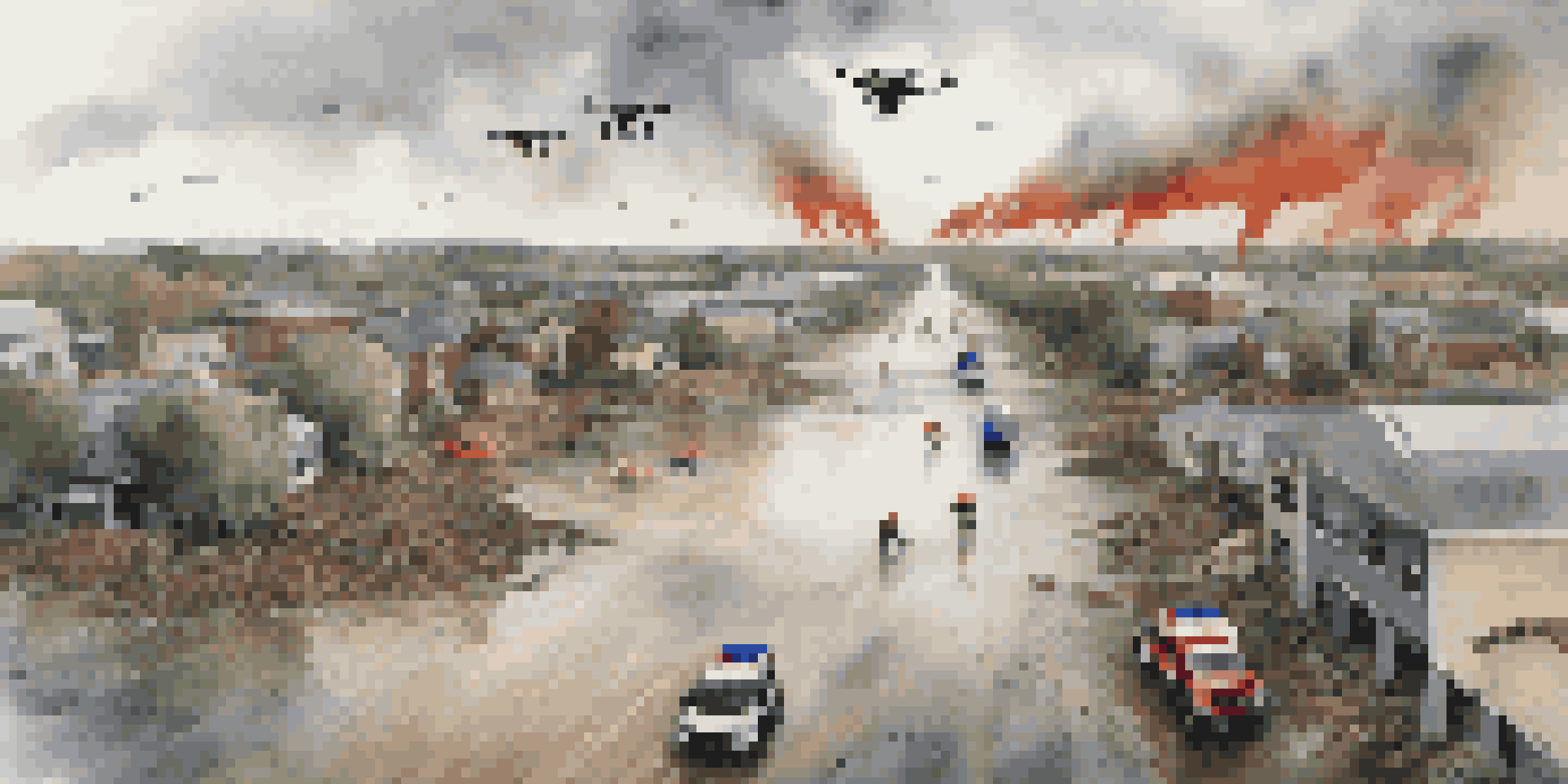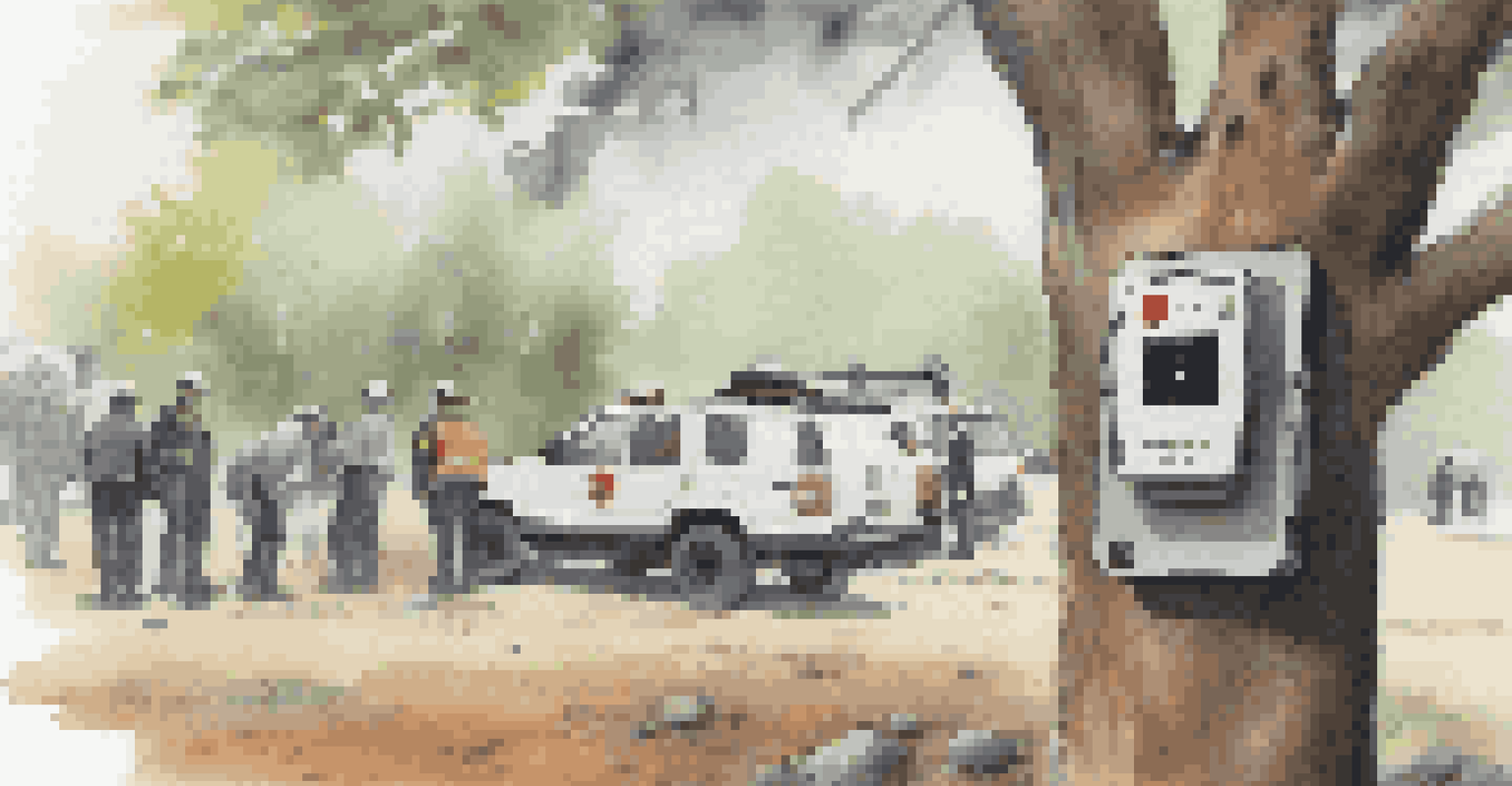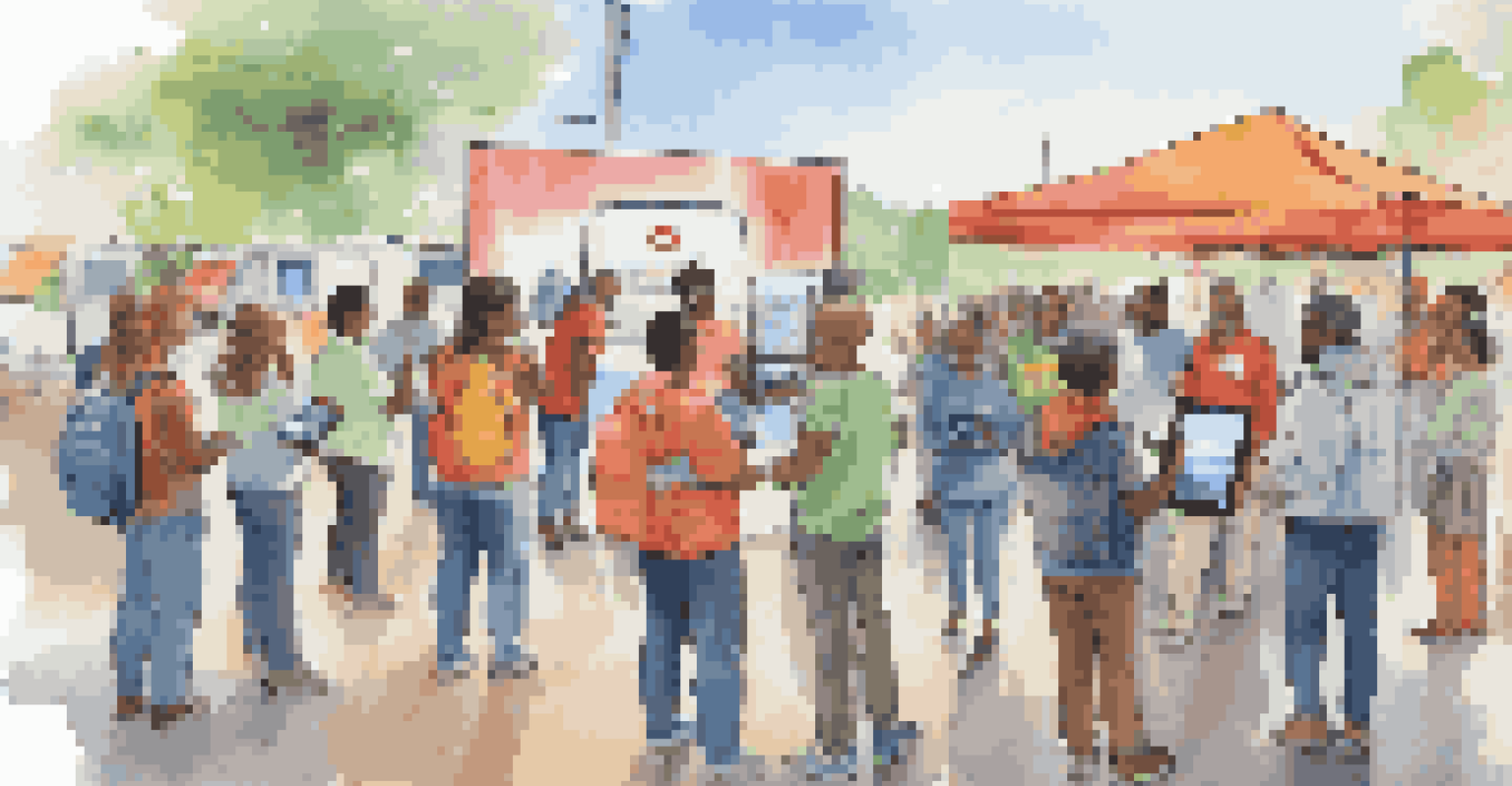IoT in Disaster Management: Enhancing Emergency Response

Understanding IoT: A Game Changer in Disaster Management
The Internet of Things (IoT) refers to a network of interconnected devices that communicate and share data. In the context of disaster management, IoT technology can provide real-time information that is crucial during emergencies. Imagine a scenario where sensors installed in vulnerable areas can detect floods or earthquakes before they escalate, enabling authorities to act swiftly.
The Internet of Things is not a trend, it’s a tool that can save lives in times of disaster.
By collecting data from various sources, IoT helps in creating a comprehensive view of a disaster situation. For instance, weather stations can monitor climatic conditions, while drones can survey affected regions, all feeding data into a centralized system. This integration allows emergency responders to make informed decisions based on accurate, real-time insights.
Moreover, IoT devices can help streamline communication between different agencies involved in disaster response. This level of coordination can significantly reduce response times and improve the overall effectiveness of rescue operations, ultimately saving lives and resources.
Real-Time Data Collection: The Backbone of Emergency Response
In emergencies, timely data collection is vital. IoT devices, such as sensors and wearables, can gather critical information about the situation on the ground. For example, smart sensors can monitor air quality and radiation levels, providing first responders with essential data they need to operate safely and effectively.

Additionally, these devices can track the movement and status of rescue teams and affected individuals. Wearable technology, like GPS-enabled devices, can help locate stranded victims, ensuring that help reaches them promptly. This real-time visibility is indispensable in chaotic disaster scenarios.
IoT Enables Real-Time Disaster Insights
IoT technology provides critical real-time data that enhances situational awareness during emergencies, allowing for swift and informed decision-making.
Furthermore, as data is collected, it can be analyzed to predict potential future risks. This predictive capability allows emergency managers to allocate resources more efficiently and prepare better for upcoming challenges, leading to a proactive rather than reactive approach.
Improving Communication: IoT's Role in Crisis Coordination
Effective communication is critical during a disaster. IoT technology enhances communication channels, enabling better coordination among various agencies. For instance, connected systems can share updates instantly, ensuring that all stakeholders are on the same page during a crisis.
In the face of disaster, the best response is often a proactive one, and IoT provides the insights needed for that kind of preparation.
In addition, IoT platforms can facilitate communication with the public. Mobile apps that utilize IoT can send alerts and updates about safety measures, evacuation routes, and resources available. This engagement keeps communities informed and prepared, which is essential during high-stress situations.
Moreover, IoT can help in establishing emergency communication networks that remain functional even when traditional systems fail. Utilizing mesh networks, where devices communicate directly with each other, ensures that messages can still be relayed, providing a lifeline when every second counts.
Predictive Analytics: Forecasting Disasters with IoT
One of the most powerful aspects of IoT in disaster management is its ability to facilitate predictive analytics. By analyzing the data collected from various sensors and devices, authorities can forecast potential disasters before they occur. For example, IoT can analyze weather patterns, soil moisture levels, and seismic activity to predict floods or earthquakes.
This predictive capability allows for the implementation of preventative measures, minimizing the impact of disasters. Communities can be alerted to evacuate early, and resources can be mobilized ahead of time. Imagine a town receiving early warnings about an approaching storm, giving them days to prepare instead of hours.
Predictive Analytics for Proactive Action
By analyzing data from various sources, IoT facilitates predictive analytics that helps forecast disasters, enabling communities to take early precautionary measures.
Moreover, predictive analytics can enhance resource management during recovery efforts. By understanding potential future scenarios, emergency services can better allocate resources and plan for a more efficient response, ultimately leading to quicker recovery times.
Drones and Robotics: Enhancing Search and Rescue Operations
Drones and robotics play a pivotal role in modern disaster response, thanks to IoT technology. Drones equipped with cameras and sensors can quickly survey disaster-stricken areas, providing valuable aerial footage to emergency responders. This bird's-eye view helps in assessing damage and identifying locations that require immediate attention.
In addition, drones can reach areas that are difficult for humans to access, such as flooded zones or collapsed buildings. This capability significantly increases the efficiency of search and rescue operations, allowing teams to locate and assist victims faster. For instance, a drone can deliver supplies to stranded individuals in hard-to-reach locations, showcasing the practical benefits of IoT.
Robotic technology, such as ground-based robots, can also be deployed to navigate hazardous environments. These robots can sift through debris, gather data, and even assist in transporting injured individuals to safety, providing a much-needed boost to human efforts during emergencies.
Challenges and Limitations of IoT in Disaster Management
Despite the many advantages, the integration of IoT in disaster management is not without challenges. One significant concern is the reliability of the technology during extreme conditions. For instance, power outages or network failures can hinder the performance of IoT devices when they are needed the most.
Additionally, data privacy and security pose substantial risks. The vast amounts of data collected can be vulnerable to cyberattacks, potentially compromising sensitive information and disrupting emergency operations. Ensuring robust cybersecurity measures is essential to safeguard against these threats.
Drones and Robots Revolutionize Rescue
Drones and robotics enhance search and rescue operations by accessing hard-to-reach areas and providing real-time support to emergency responders.
Lastly, the implementation of IoT solutions requires significant investment and training. Many regions, especially in developing countries, may struggle to adopt these technologies due to financial constraints or lack of technical expertise. Addressing these gaps is crucial for maximizing the potential of IoT in disaster management.
The Future of IoT in Disaster Management: A Collaborative Approach
Looking ahead, the future of IoT in disaster management will likely involve greater collaboration among various stakeholders. This includes government agencies, technology companies, and local communities working together to create comprehensive disaster response strategies. By pooling resources and expertise, they can develop innovative solutions that enhance preparedness and response.
Additionally, we can expect advancements in IoT technology, making devices more resilient and efficient. For example, improvements in battery life, connectivity, and data analytics can lead to more reliable and effective systems in the field. As technology evolves, so will the capabilities of IoT in addressing disaster challenges.

Ultimately, a community-centric approach that prioritizes local needs and inputs will be vital. Engaging with communities to understand their specific challenges and incorporating their feedback into IoT solutions will lead to more effective disaster management strategies, ensuring that everyone is prepared for the unexpected.